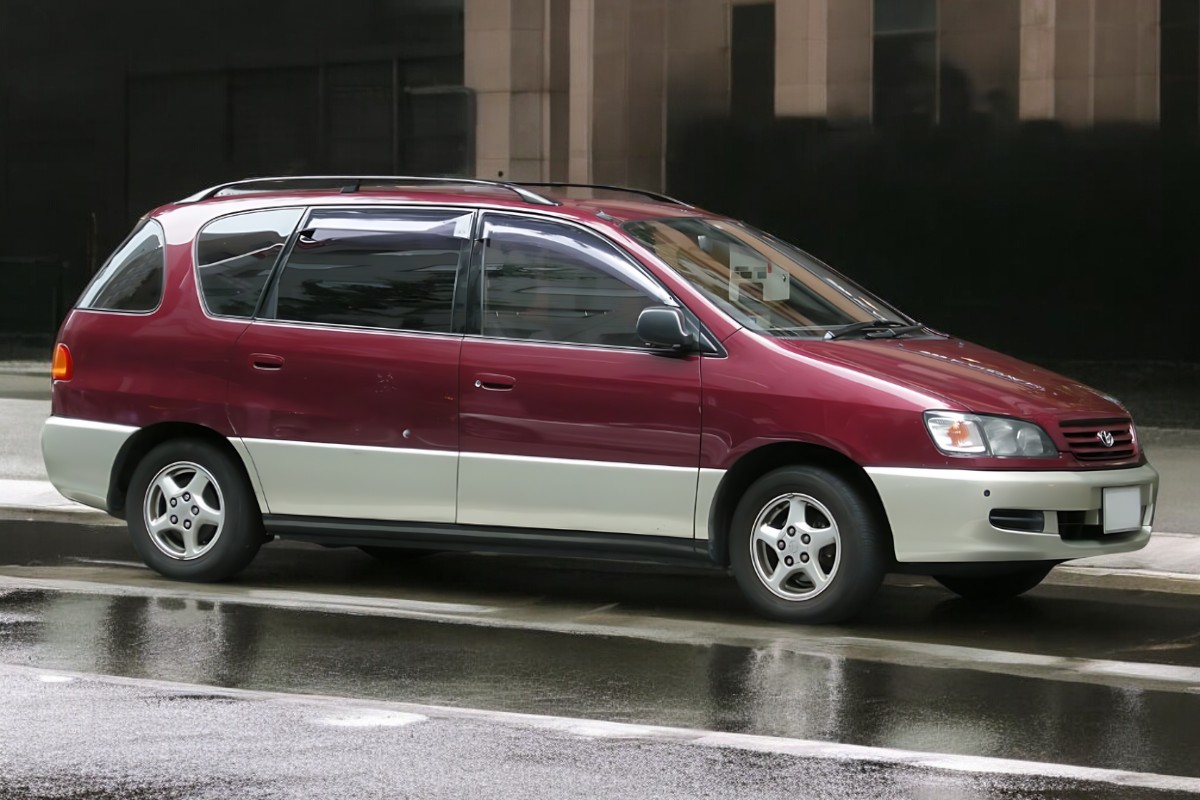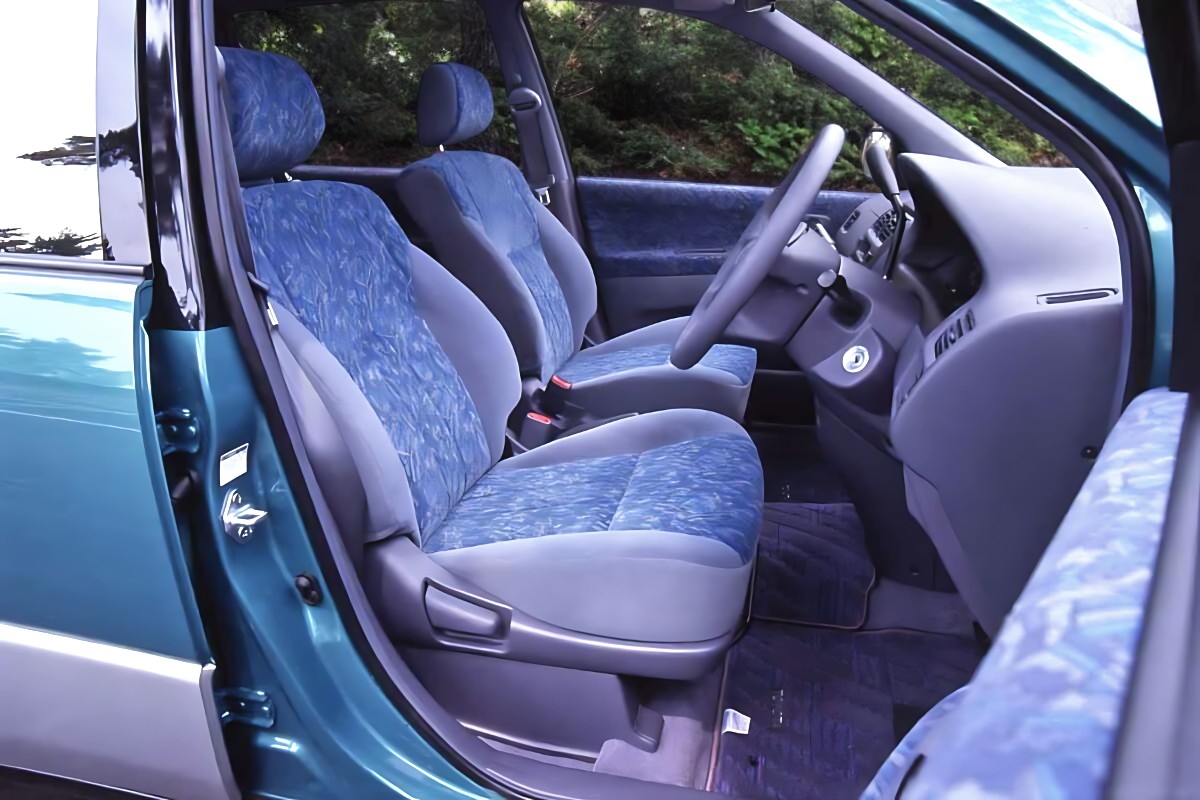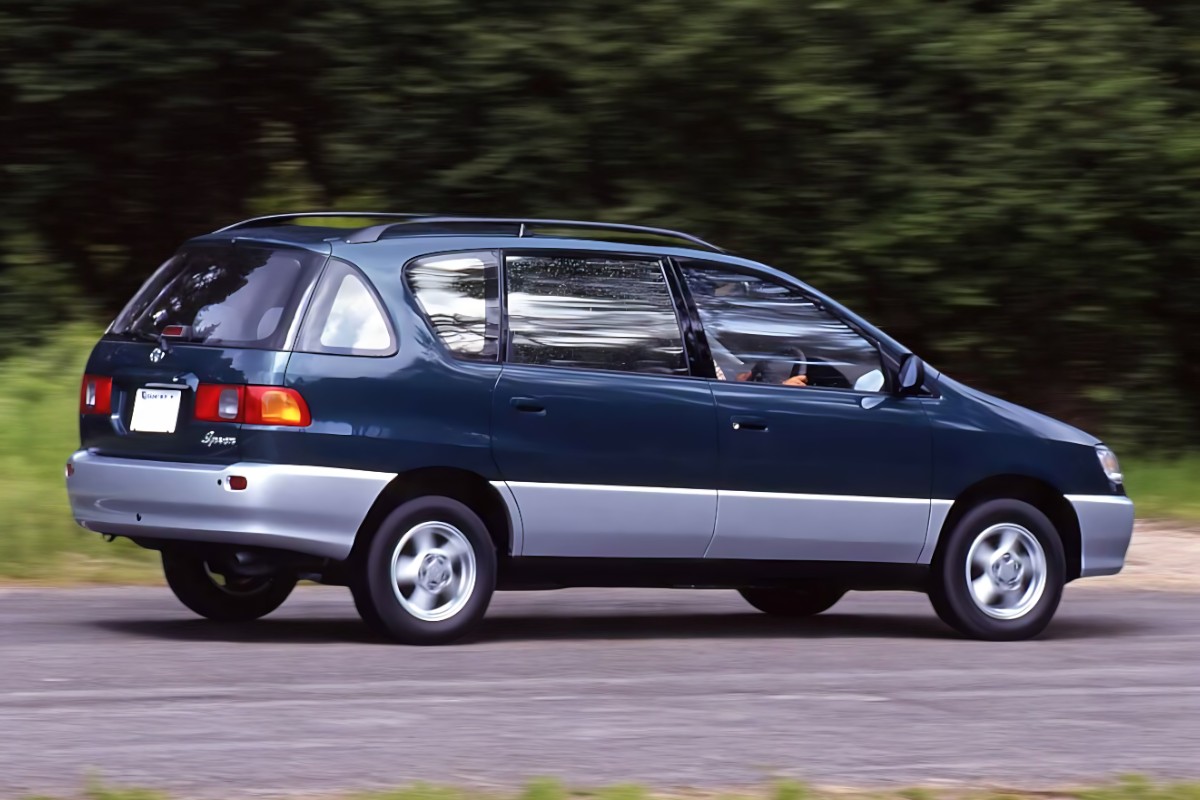Toyota Ipsum
The RHD Toyota Ipsum is a car-like minivan with lots of interior space, as well as a huge amount of cargo hauling capacity. Learn more about this RHD model to decide whether it will be good for your postal delivery route.
Jump To Section
Toyota Ipsum Introduction
If you think Toyota Ipsum sounds like an odd model name, you’d be right. But this has been a hugely popular minivan among Japanese families and now it’s a great RHD option for US rural postal carriers, too.
Designed by Yasuhiko Kaneko and introduced at the 31st Toyota Motor Show in 1995, the Ipsum quickly became a family favorite due to its spacious interior, fuel efficiency, and surprisingly good performance. In fact, Toyota made a big deal about how flexible the Ipsum was, with ads showcasing its various interior configurations, like a mobile office and camping vehicle.
The first-generation Ipsum was built on the Toyota Corona Premio platform and featured both gasoline and diesel engine options. It also incorporated Toyota’s advanced 4WD system in some models, so it’s a great choice even if you’re in a state that gets some snow.
Now, the name may sound strange, but it comes from the word ‘ipsum’ in Latin, which translates as ‘itself’, the idea being that this would be a very self-sufficient, practical car. As a right-hand drive (RHD) vehicle, Ipsums are perfectly suited for the unique demands of postal delivery routes, offering a blend of comfort and capacity, along with really good fuel economy.


Background and Development of the Toyota Ipsum
The Toyota Ipsum (which was also marketed as the Toyota Picnic in some places) was developed to meet the growing demand for multi-purpose vehicles (MPVs) in the mid-1990s. Toyota wanted to build a vehicle that had the practicality of a minivan but with the driving comfort of a sedan. Launched in 1995, the first-generation Ipsum featured a front-engine, front-wheel-drive layout with gasoline and diesel engines, or a 4WD layout with gasoline engines only.
Key Design and Engineering Goals
Toyota’s focus was on maximizing interior space without compromising on driving dynamics. The Ipsum’s design was all about versatility, with flexible seating arrangements and a low floor height for easy access. Engineers also prioritized safety, incorporating features such as airbags and anti-lock brakes (ABS) to ensure the Ipsum met the safety standards of the time.
Evolution Through Different Generations
The second generation, introduced in 2001, brought significant improvements in terms of design, performance, and technology. With a more streamlined exterior and enhanced interior features, the second-generation Ipsum continued to build on the success of its predecessor. Toyota’s commitment to innovation and customer satisfaction ensured that each iteration of the Ipsum remained relevant and competitive in the MPV market. This second generation of Ipsum will not be available to US postal worker buyers until 2026.
Key Features of the Toyota Ipsum
Engine and Performance
The first generation Toyota Ipsum was powered by a range of reliable engines designed to deliver a balance of power and efficiency. The most common engine was a 2.0-liter 4-cylinder gasoline 3S-FE engine, but there was also a larger-capacity 2.2-liter turbo-diesel 3C-TE engine. As with all Toyota products, the Ipsum’s engines are known for their durability and low maintenance requirements.
Fuel Efficiency
As a postal worker who wants to make his EMA stretch as far as possible, you know how important good fuel economy is. Well, the Toyota Ipsum excels in this area, with an average fuel economy of around 25-30 miles per gallon, depending on conditions.

Interior and Comfort
The interior of the Toyota Ipsum is designed with both comfort and convenience in mind. The spacious cabin can accommodate up to seven passengers — making it ideal for both mail, parcels and passengers. The seats are also designed to be comfortable for long periods on the road every day.
Safety Features
Standard safety features include dual front airbags, ABS, and side-impact protection, which were all advanced features for the time, and still cover the fundamentals of vehicle safety.
What Japanese Drivers Like About The Ipsum
We took a look at what Japanese Ipsum owners were saying since this model is less well-known in the US. Here are the major themes that they focused on.
- Interior Comfort and Versatility:
- The interior is praised for being spacious and practical, particularly with the second row of seats. The third row is noted to be less spacious but can be folded to increase cargo capacity.
- Users also appreciate the well-thought-out design and the availability of underfloor storage, which increases the overall cargo capacity.
- Exterior Design:
- Many reviews in Japan mention the round, gentle design of the Ipsum, which is seen as more appealing compared to the more aggressive designs of modern Toyota vehicles.
- Many reviews in Japan mention the round, gentle design of the Ipsum, which is seen as more appealing compared to the more aggressive designs of modern Toyota vehicles.
- Driving Experience:
- Owners often mention the Ipsum’s smooth handling and comfortable ride. Although they’re generally not so keen on the engine, the overall driving experience is seen as positive.
- Owners often mention the Ipsum’s smooth handling and comfortable ride. Although they’re generally not so keen on the engine, the overall driving experience is seen as positive.
- Reliability and Build Quality:
- Owners also emphasize the vehicle’s reliability, mentioning that it rarely has major issues. A typical Toyota, then!
- The build quality is frequently mentioned, with the car holding up well over many years of use.
Features and Options
The first generation Toyota Ipsums came with various features and options. These included:
- Climate control
- Power windows and locks
- Multifunctional steering wheel
- Advanced audio system with CD player
- Optional leather upholstery


Maintenance and Reliability
Common Maintenance Tasks and Costs
Regular maintenance tasks for the Toyota Ipsum include oil changes, brake inspections, and tire rotations. These tasks are straightforward and relatively inexpensive, ensuring that the vehicle remains in good working condition. Parts are readily available, and the simplicity of the Ipsum’s design makes it easy for mechanics to perform routine maintenance.
Long-Term Reliability and Durability
As we touched on above, the Toyota Ipsum is renowned for its long-term reliability and durability. Owners report that the vehicle can run smoothly for many years with proper maintenance. The robust build quality and dependable performance make the Ipsum a reliable choice for postal routes where you need a vehicle you can count on day in and day out.


Specifications
First Generation Gasoline Toyota Ipsums (1995-2001)
- Engine: 2.0L 4-cylinder (3S-FE)
- Transmission: 4-speed automatic / 5-speed manual
- Drive: Front-wheel drive and 4WD
- Seating: 5-7 seats
- Fuel Efficiency: 25-30 mpg
First Generation Diesel Toyota Ipsums (1995-2001)
- Engine: 2.2L 4-cylinder Turbo Diesel (3C-TE)
- Transmission: 4-speed automatic
- Drive: Front-wheel drive
- Seating: 5-7 seats
- Fuel Efficiency: 30-35 mpg
Conclusion
The Toyota Ipsum may not have been a vehicle you were aware of when you arrived on our Postal Driven page but, as you have read, this can be a great alternative for postal workers on routes that aren’t so demanding weatherwise. In particular, the excellent cargo space, frugal engine, Toyota build quality, and more car-like driving experience should put it near the top of your list if a minivan would work best for your rural postal route.

